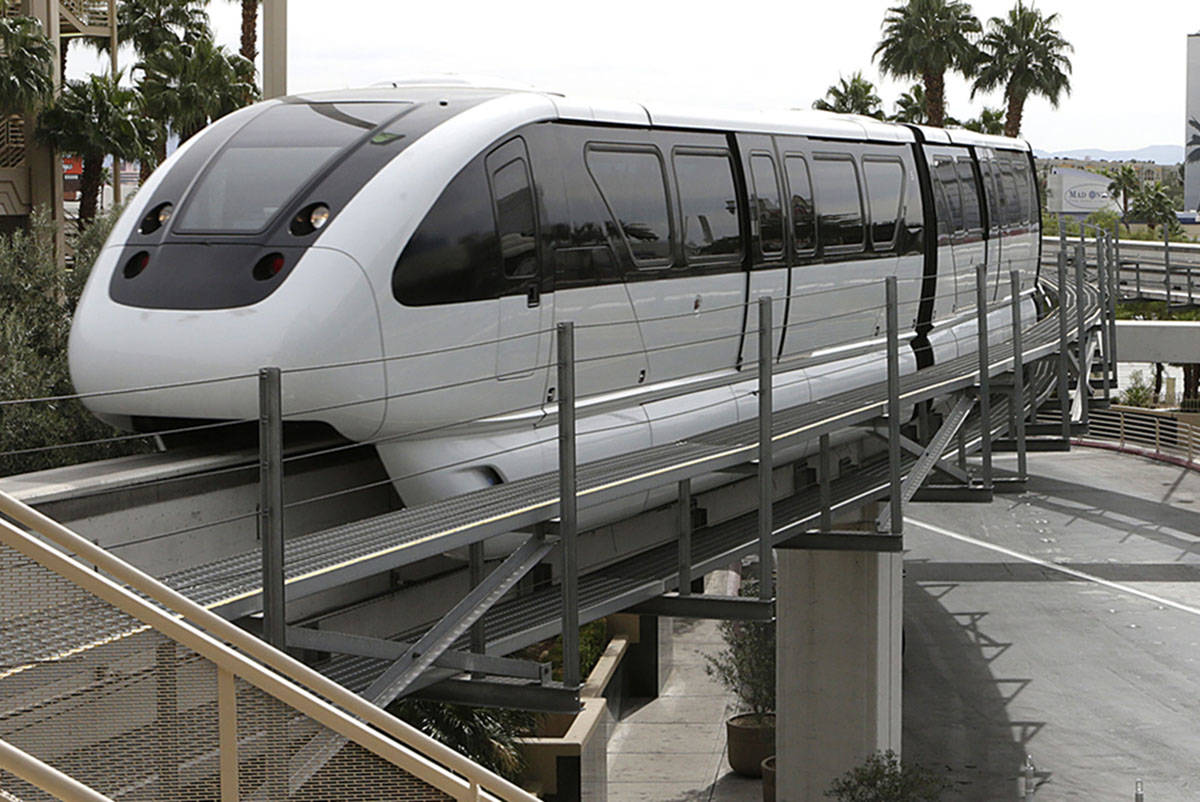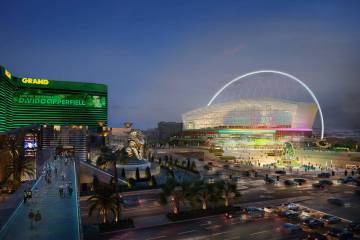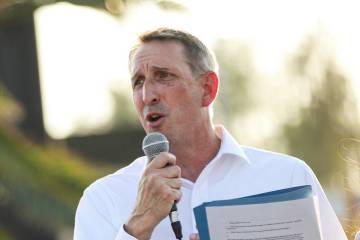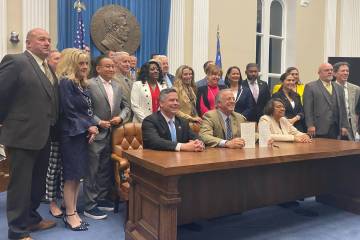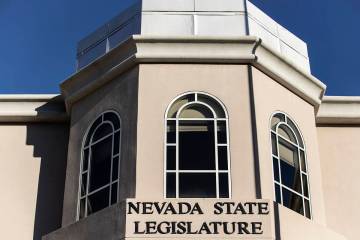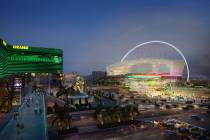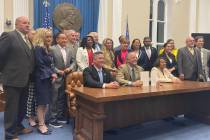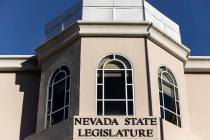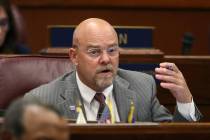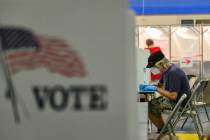STEVE SEBELIUS: Who wants to own a monorail?
We always knew we’d end up here.
The Review-Journal’s Richard Velotta reported last week that the Las Vegas Convention and Visitors Authority — which just cut its annual budget by 43 percent — had talks about acquiring the beleaguered Las Vegas Monorail.
It shouldn’t come as a surprise. From the very start in the 1990s, the monorail’s founder said it would ultimately become a public asset.
In the years since, the monorail has become something of an orphan, useful primarily during major conventions when roads near the Las Vegas Convention Center are overwhelmed with traffic. But even with the use of state-issued, tax- exempt bonds and generous tax abatements, the monorail was still unable to repay its construction debt and had to declare bankruptcy. More recently, the train sought a potential subsidy from Clark County as it plans an extension to the Mandalay Place mall.
Steve Hill, the LVCVA’s president and CEO, called the monorail “an important transportation option” and even allowed that it could generate cash. This would be a surprising change: Until now, the monorail has really made money only for its founders and top employees. Consider: According to the most recent IRS Form 990 filing, Monorail CEO Curtis Myles is paid a base salary of $343,733 for overseeing a train line that’s 3.9 miles long.
Contrast that with Kristina Swallow, the director of the Nevada Department of Transportation, who is responsible for 5,400 miles of roadway and 1,229 bridges throughout the state, but is paid just $125,434. Or M.J. Maynard, the CEO of the Regional Transportation Commission, who makes $210,412, yet oversees 10,053 miles of streets and roadways in Clark County.
Many have argued the monorail could be more useful if it ran to McCarran International Airport. And while those plans were discussed, the history of the monorail reveals one overarching fact: It was never intended to be a mass-transit system as much as a closed loop, ferrying gamblers to a handful of resorts.
That doesn’t mean it couldn’t be made somewhat more useful: the Mandalay Place plan (and another potential stop at the under-construction MSG Sphere located adjacent to The Venetian) could link the city’s major convention centers for the first time.
Even so, the train now faces competition from the intriguing Boring Co. underground people movers. Tunnels are already under construction beneath the convention center complex, with plans to head to Strip casinos and perhaps Allegiant Stadium. Unlike the monorail, the Boring Co. system doesn’t require ugly above-ground infrastructure that takes up badly needed right-of-way and its stations can be more strategically planned to drop passengers closer to where they need to go.
Another factor: Among the many benefits enjoyed by the monorail is a non-compete agreement that would prevent other, multi-stop fixed route systems from being built. If the LVCVA acquires the monorail, that wouldn’t be an issue.
The monorail has been many things in its life: an example of the juice exercised by elite players in old Las Vegas, a cautionary tale about using yesterday’s technology to address tomorrow’s problems, even an occasionally useful way to dodge convention traffic. Now, it may become a public responsibility.
Don’t be surprised. That’s how they planned it from the start.
The Review-Journal is owned by the family of Las Vegas Sands Corp. Chairman and CEO Sheldon Adelson. Las Vegas Sands operates The Venetian and the Sands Expo &Convention Center and is a partner on the MSG Sphere project.
Contact Steve Sebelius at SSebelius@reviewjournal.com or 702-383-0253. Follow @SteveSebelius on Twitter.



